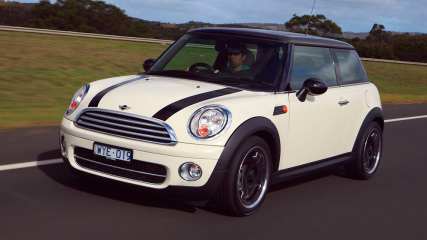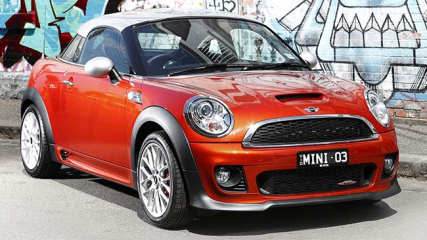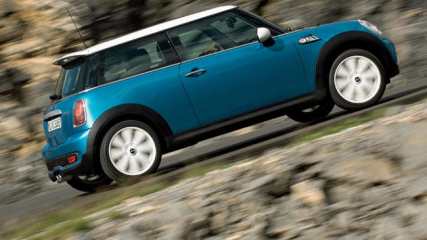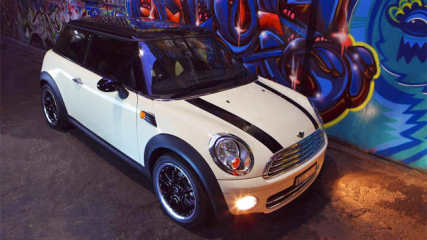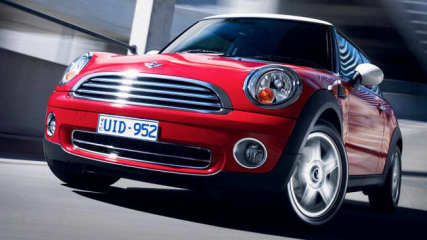Used Mini Cooper review: 2002-2007
By Graham Smith · 29 Jul 2010
Attempting to reinvent the past is fraught with danger; the motoring graveyard is full of brave, but misguided attempts to breathe new life into past glories. It's hard to recapture the essence of an older model, to take the thing that made it the runaway success it was and mould it into something as meaningful to today's car buyer.Of all the re-born classics carmakers have tried to pass off on the motoring public in recent times the Mini has clearly been the best and most successful. The new age Mini not only looked passably like the old one, it had the feel of the old classic as well.MODEL WATCHIt's fair to say that the original Mini was an accidental classic. It's designer, Sir Alec Issigonis, set out to make an efficient, affordable family car for a country still suffering the ravages of a debilitating war.The efficiency was delivered through a clever packaging approach that employed a boxy body, a wheel planted at each corner, and with the engine swung through 90 degrees from tradition to create a tiny car with a roomy cabin.With a modest engine, manual gearbox and few frills Issigonis's Mini achieved exactly what its designer intended. Cute looks added to its appeal and the Mini became an instant hit with car buyers all over the world.But it was to become much more than a cheap and cheerful means of family transport when revheads of the time discovered its stable chassis could easily handle much more power than it had in its standard form.Grand Prix car designer, John Cooper, was employed to develop a special Mini, one with high performance and nimble handling that was heaps of fun to drive. The hot Mini Cooper was the first of Cooper's creations, the next was the even hotter Mini Cooper S that followed, both of which are much-loved classics today.The popularity of the little car was boosted enormously when London's trendy "in" crowd adopted it as their favoured means of transport. Appearing in movies such as 'The Italian Job' also helped massage the Mini legend.With such a history BMW was under close scrutiny when it set about recreating the Mini in the early-2000's. Fail and they would have been the laughing stock of the motoring world, but if they got it right they would have a winner on their hands.Fortunately for the German automaker they got it pretty much right, and its new-age Mini was greeted with enthusiasm. The new Mini was much larger than the original car, but BMW managed to capture the cute looks and proportions that made the original so popular with the result that the new car doesn't look nearly as large as it is in reality.Like the original there was a wheel at each corner, which along with its well-tuned suspension produced a nimble chassis that was thrilling to drive. One of the few criticisms of the BMW Mini was of the ride, which was thought to be a little too firm for most modern day rear-ends.Initially BMW launched the Mini Cooper with a 1.6-litre single overhead camshaft four-cylinder engine boasting 85 kW and 149 Nm, but followed up with the Mini Cooper S that had a supercharged version of the engine producing 120 kW and 210 Nm.In standard Cooper guise buyers could choose between a five-speed manual gearbox and a five-speed CVT auto, while the Cooper S only came with a six-speed manual.An update in 2003 saw the five-speed CVT replaced by a six-speed CVT auto. Being upmarket models the Cooper and Cooper S had heaps of standard features.Externally there was the retro paint style with a white roof, alloy wheels, lashings of chrome on things like the door handles, grille and exhaust tip. On the inside there was cloth trim, a leather steering wheel, a split-folding rear seat, air conditioning, CD sound, power windows and mirrors, remote central locking and a trio of cup holders.When it followed the Cooper S had leather trim, sports seats, larger alloys and sports suspension.IN THE SHOPThe Mini is generally a solid performer, but there are a couple of known problems areas. The power steering is noisy, and there are reports of the failure of the power steering pump.The CVT transmission could be troublesome and should be carefully checked by someone experienced with this type of transmission. The manual gearbox is the best choice for a fun drive. Run-flat tyres are expensive and contribute to a firm ride some find uncomfortable.IN A CRASHThe Mini's underlying strength is its stable platform and nimble handling, with predictable power steering and power ABS anti-lock brakes, electronic brakeforce distribution and traction control.In Cooper S guise it also boasted electronic stability control for even more active safety. Overlaying the active safety was a comprehensive passive safety package of front, side and head airbags. ANCAP rated the new Mini at four stars.AT THE PUMPMini owner Frank Bradley says he gets 8.9 L/100 km on around town, and 5.7 L/100 km cruising at 100 km/h on long trips. Those figures closely match the official BMW numbers of 8.5 L/100 km in city driving and 5.6 L/100 km on the highway, but road testers reported fuel consumption of around 10 L/100 km from cars they tested.OWNERS SAYFrank Bradley bought his manual Mini in 2002 when they were first launched and says he would buy another one if and when he was to sell it. He uses it as his daily driver, but it's also become his hobby car since he joined the Victorian Mini Club. His likes include the unique styling, the precise handling, the drivability, incredible brakes and the build quality, while his list of dislikes include the front seat comfort and the noisy power steering pump.Glenys Tidd and her husband have two Minis and says that they would have more room if they had the room. He uses his 2002 Cooper S for longer trips to the city from their country home when he likes the performance; she drives a 2008 Mini Clubman wagon for the room and the economy. They both have a lot of fun driving their Minis and say anyone with a complaint is not really a Mini person.LOOK FOR. Cute classic looks. Agile chassis. Fun-filled driveALSO CHECK THESE. VW GTi - 2005-2007The VW Golf is the real successor to the original Mini, the GTi the successor to the Mini Cooper and Cooper S, using the same formula of brilliant packaging and sizzling performance. The GTi sets the hot hatch benchmark. Pay $25,000-$30,000.. FORD FOCUS XR5-T - 2006-2007Like the rest of the auto world Ford took up the Mini philosophy and built on it with cars like the Focus XR5, the hot sports hatch in the Focus range. Terrific performance, great handling, an excellent all-rounder. Pay $25,000-$27,000.. PEUGEOT 206 GTi 180 - 2004-2007Peugeot and VW were constant contenders for the hot hatch title after the departure of the original Mini. The 206 GTi 180 delivered a genuinely sporty ride with a punchy engine and excellent chassis. Pay $16,000-$22,000.THE BOTTOM LINEFun-filled driver that successfully recalls the past.
